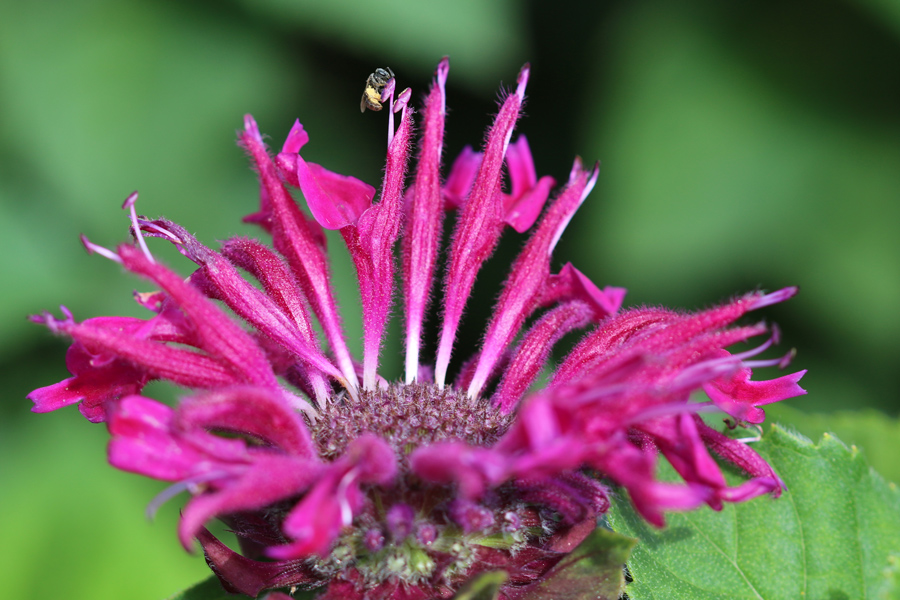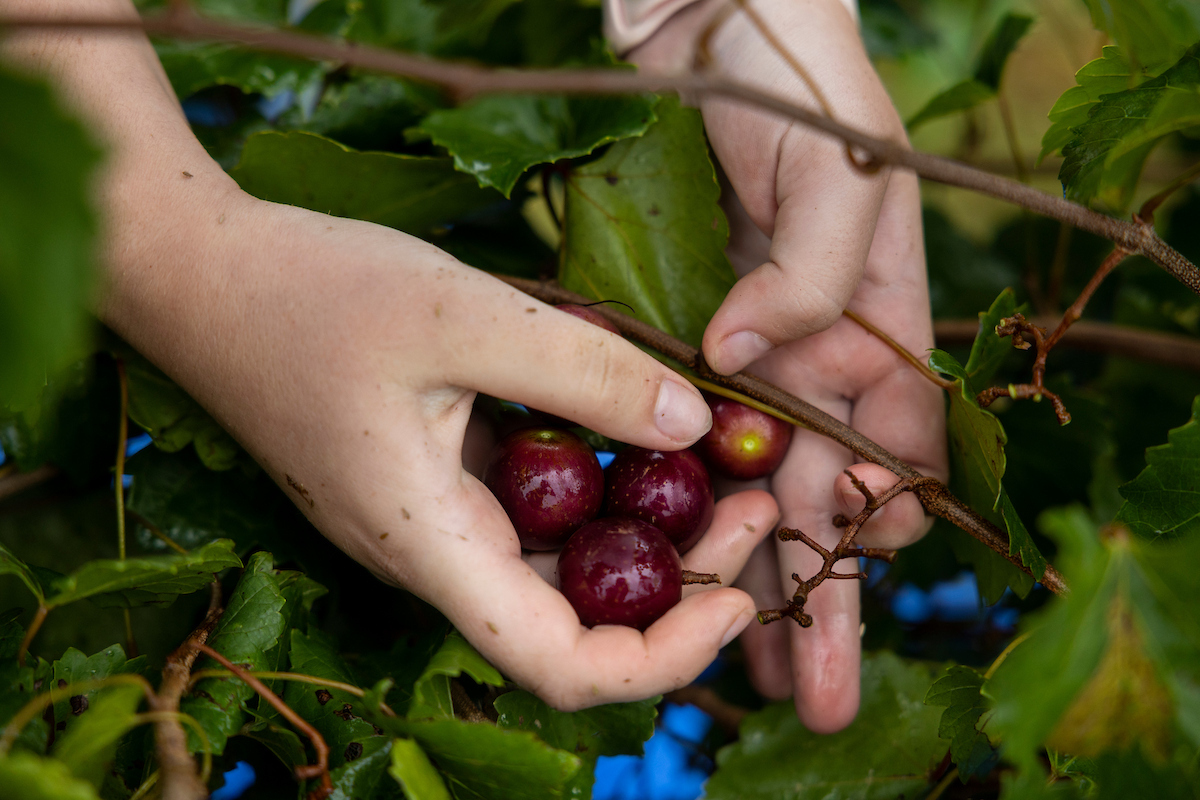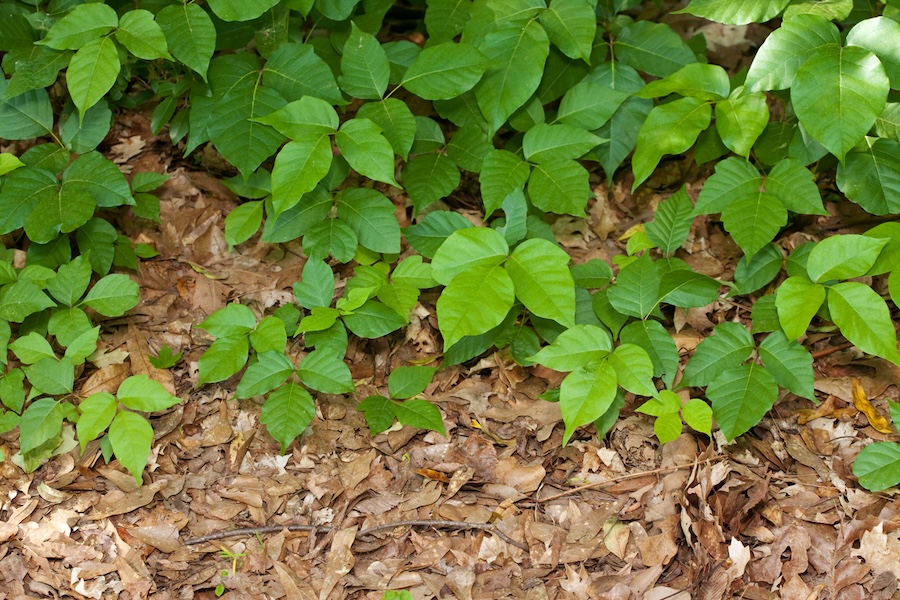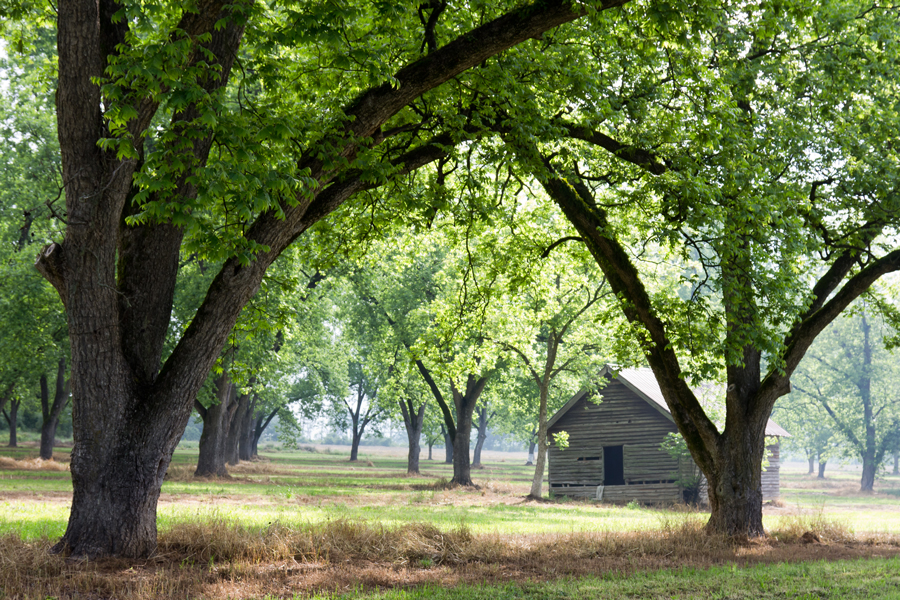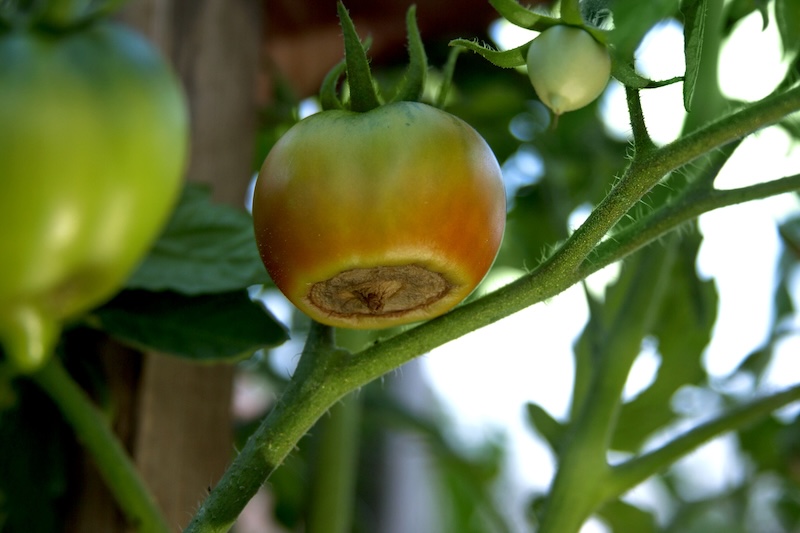Additional authors include Heather Alley, Conservation Horticulturist, State Botanical Garden of Georgia, and Rachel Smith, Georgia Native Seed Network Project Coordinator, State Botanical Garden of Georgia.
Introduction
Monarda, commonly known as beebalm (also written as bee balm), is a North American perennial naturally found in woodlands, meadows, and floodplains (Figure 1). Monarda belongs to the mint family, and shares features with other relatives, such as leaf fragrance (from essential oils within the leaves).
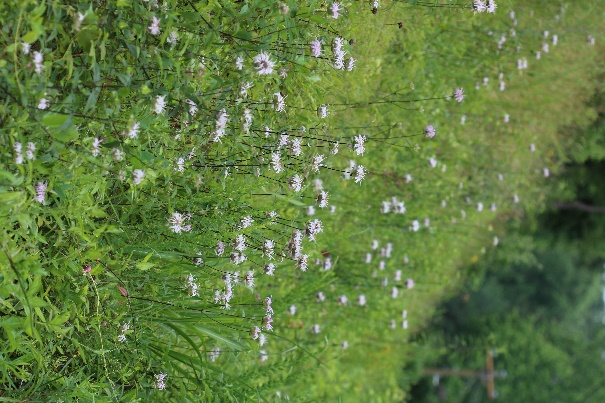
The best-known species, M. citriodora (lemon bergamot), M. didyma (sweet bergamot), M. fistulosa (wild bergamot), and M. punctata (dotted monarda), and the ornamental M. bradburiana, and M. x hybrida hort. (hybrids of M. didyma and M. fistulosa), have been studied for their essential oil composition and ethnobotanical (a study of the cultural relationships between plants and humans) uses. Aside from its aesthetics, beebalm offers environmental benefits, as its flowers, seeds, and shoots provide forage and habitat for many species of wildlife, including insects and birds.
The genus has many cultivars established in the garden trade and several species native to Georgia. Monarda has been trialed at the Chicago Botanic Garden and Mt. Cuba Center, but in-depth studies from southeastern locales are scarce. We set out to investigate how 10 of these plants that are popular in the trade performed in the montane and piedmont (i.e., northern) Georgia regions.
Of particular interest for us were horticultural performance in the landscape, time and length of bloom (flower phenology), and powdery mildew tolerance. Powdery mildew is a bane of many garden plants, but beebalm has been particularly affected by it. The disease symptoms include white growth (Figure 2), especially in conditions with high humidity and temperature fluctuations.

Of the 10 species and cultivars (called taxa) included in our study, eight have distinctively colored floral parts. For example, within the species M. punctata, the Georgia and New Jersey ecotypes (seed sources) vary in the color of their bracts (specialized leaves that are different from foliage leaves); M. punctata from Georgia has pink bracts, while the New Jersey type displays white (Table 1).
| Taxa | Type | Parentage | Distribution | Reference Figure No. |
|---|---|---|---|---|
| M. bradburiana | Species | — | Indiana west to eastern Kansas, south through Kentucky, Tennessee, and Missouri to Alabama, Arkansas, and Oklahoma | 4 |
| M. Sugar Buzz® Grape Gumball Bee Balm | Cultivar | M. didyma | — | 5 |
| M. didyma | Species | — | Maine west to Michigan, south to Pennsylvania and Ohio, and in the Appalachians south to southwestern North Carolina, southeastern Tennessee, and northeast Georgia (part of the northern range is likely only by introduction) | 6 |
| M. didyma ‘Jacob Cline’ | Cultivar | M. didyma | — | 7 |
| M. x ‘Judith’s Fancy Fuchsia’ | Cultivar | M. didyma | — | 8 |
| M. ‘Raspberry Wine’ | Cultivar | M. didyma | — | 9 |
| M. fistulosa | Species | — | var. fistulosa, Connecticut south to southwestern North Carolina; nearly or entirely limited to the Appalachians. var. mollis, Maine west to Minnesota, south to Georgia, Alabama, and southeastern Texas |
10 |
| M. fistulosa ‘Claire Grace’ | Cultivar | M. fistulosa | — | 11 |
| M. punctata GA | Species | — | New Jersey to southern Florida, west to Texas, mainly on the Coastal Plain, but also extending inland | 12 (upper) |
| M. punctata NJ | Species | — | New Jersey to southern Florida, west to Texas, mainly on the Coastal Plain, but also extending inland | 12 (lower) |
|
From “Evaluation of Select Monarda Taxa in Montane and Piedmont Regions of Georgia I: Horticultural Performance and Disease Tolerance,” by R. Smith, S. V. Pennisi, J. Affolter, and H. Alley, 2024, HortScience, 59(6), p. 760 (https://doi.org/10.21273/HORTSCI17793-24). |
||||
How We Evaluated Beebalm
The evaluation of Monarda was carried out at the Georgia Mountain Research and Education Center in Blairsville (Figure 3) and at the State Botanical Garden of Georgia in Athens, GA.

The plants were monitored over two growing seasons, with data collected on several key performance indicators:
- Size: height and width
- Flowering:
- timing and duration (phenology)
- abundance of bloom
- Disease progression: presence and extent of powdery mildew symptoms
Detailed Findings About Beebalm
One of the key findings of the study was the variation in flowering periods among the different Monarda taxa. By carefully selecting species that bloom at different times, gardeners can ensure a continuous display of flowers from late spring through early fall. For instance, M. bradburiana blooms in late April and May, while M. punctata extends the flowering season into September and October.
Beebalm Species and Cultivars in the Study
Monarda bradburiana
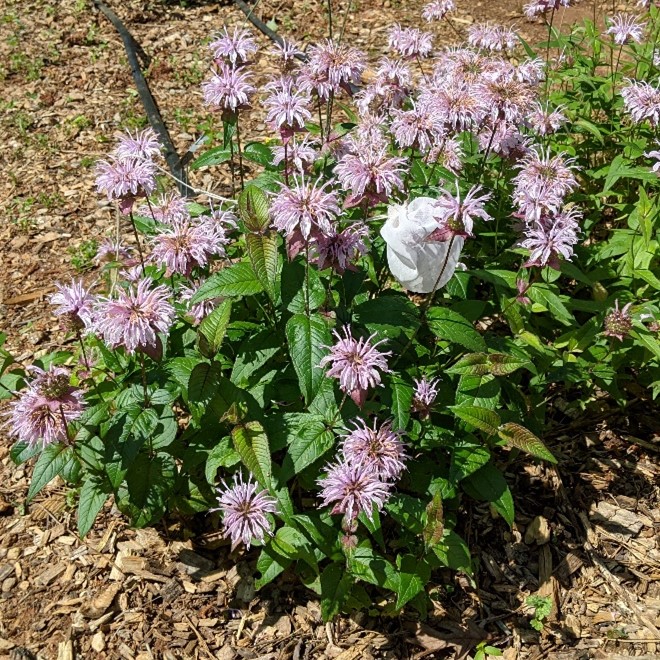
This species is native to the central United States and is known for its compact growth habit and high tolerance to powdery mildew. It blooms in late April and May, providing early-season color. Its smaller size makes it ideal for front borders or small garden spaces. It showed the highest tolerance to powdery mildew among all taxa.
Monarda ‘Sugar Buzz® Grape Gumball’
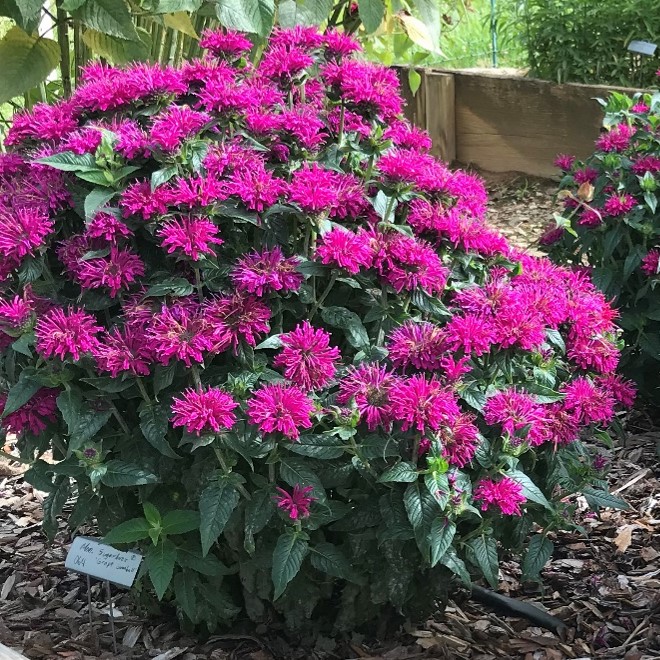
A dwarf cultivar of Monarda didyma, this plant is bred for its compact size and vibrant purple blooms. It performed well in the first season but struggled to persist in the southern climate of Athens, Georgia. It is best used in annual displays or in regions with milder climates. It had moderate susceptibility to powdery mildew.
Monarda didyma
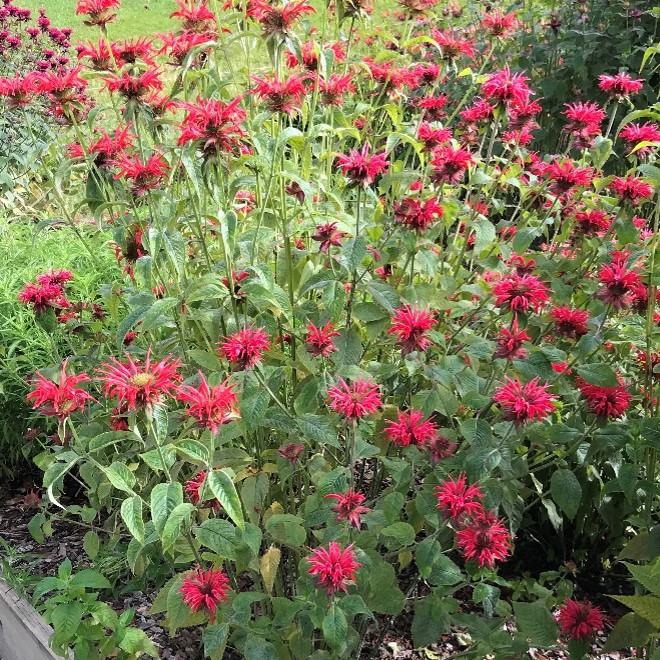
Commonly known as beebalm or Oswego tea, this species is native to the eastern United States. It is known for its large, showy flowers and aromatic foliage. However, it was more susceptible to powdery mildew compared to other species.
Monarda didyma ‘Jacob Cline’
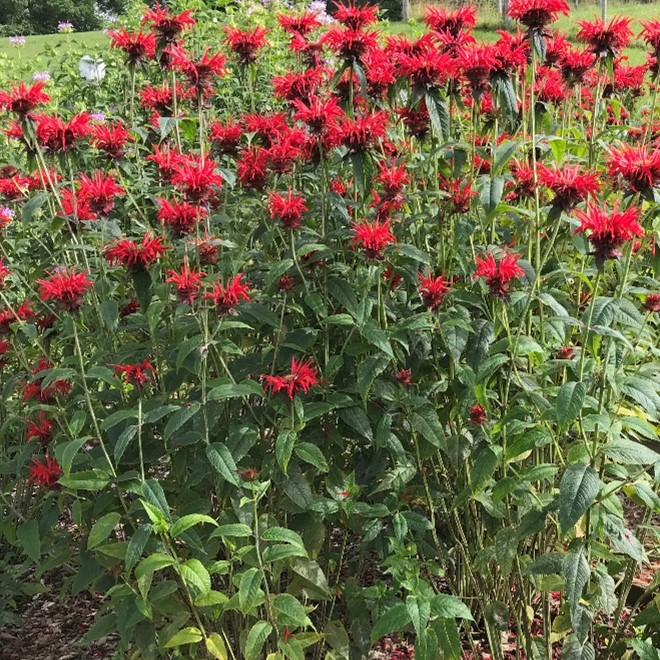
A popular cultivar of Monarda didyma, ‘Jacob Cline’ is known for its striking red flowers and improved disease resistance. It blooms in mid-summer and can reach heights of over 3 ft, making it suitable for the back of garden beds. It showed moderate susceptibility to powdery mildew.
Monarda x ‘Judith’s Fancy Fuchsia’
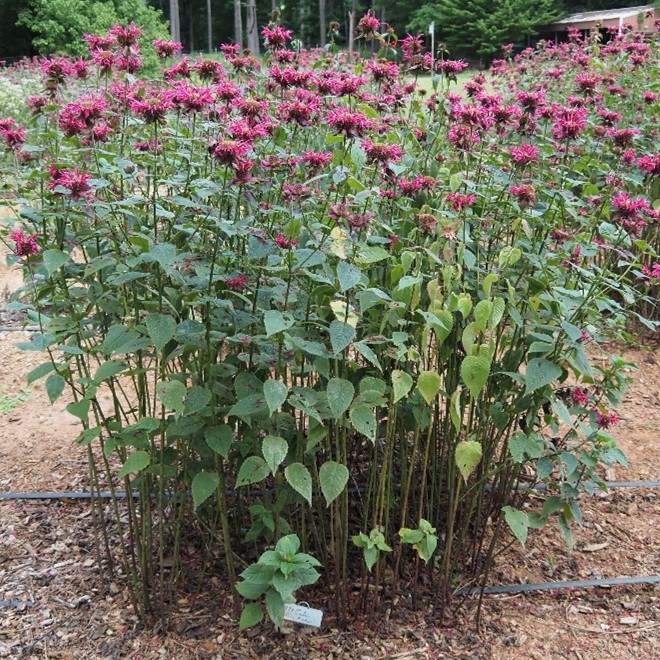
This hybrid cultivar is notable for its vibrant fuchsia flowers and robust growth. It performed well in both study sites, with a long flowering period and moderate disease tolerance.
Monarda ‘Raspberry Wine’

Another cultivar of Monarda didyma, ‘Raspberry Wine’ is known for its deep raspberry-colored flowers. It has a tall growth habit and blooms from mid-summer to early fall. It showed moderate disease.
Monarda fistulosa
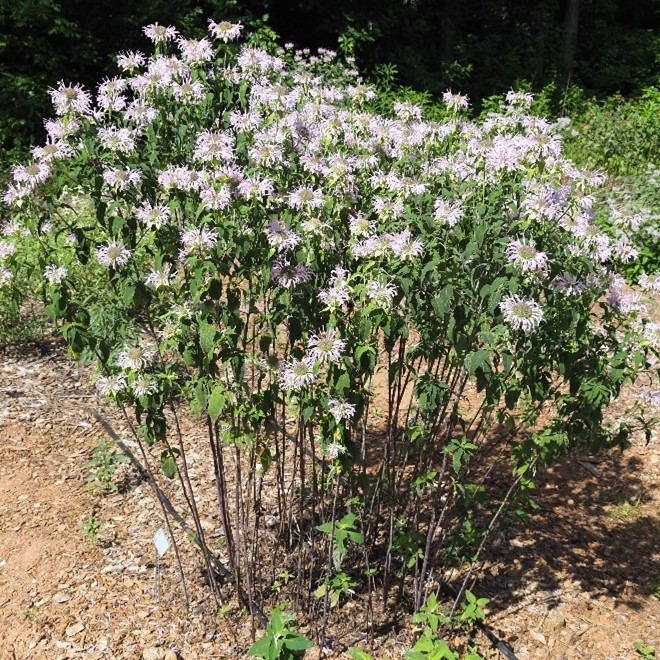
Also known as wild bergamot. This species is native to North America and is known for its pale lavender flowers and strong minty aroma. It had the highest floral density in the study. However, it is more susceptible to powdery mildew.
Monarda fistulosa ‘Claire Grace’
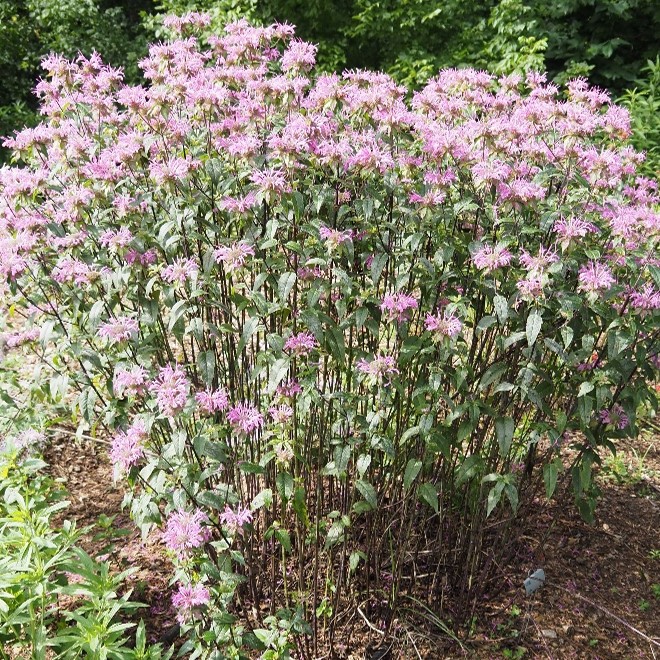
A cultivar of Monarda fistulosa, Claire Grace’ is bred for its compact growth and improved disease resistance. It performed well in both study sites, with a high floral density and long flowering period. Its exhibited better disease tolerance compared to the straight species.
Monarda punctata
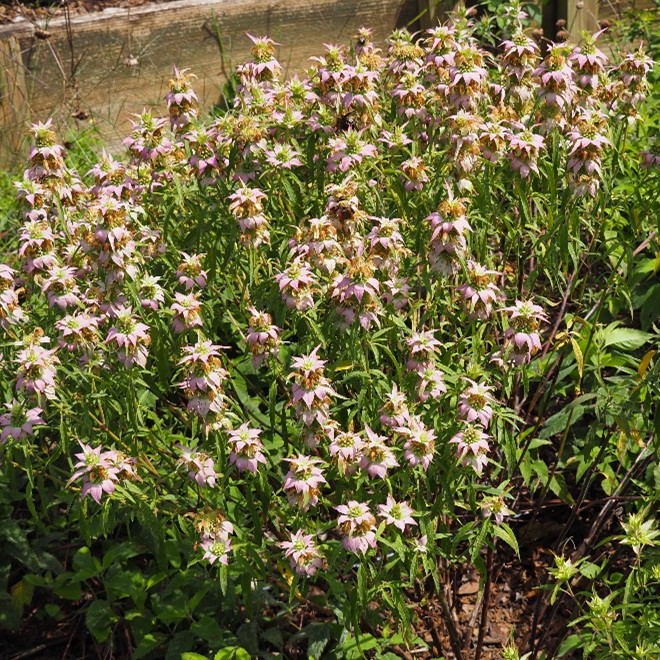
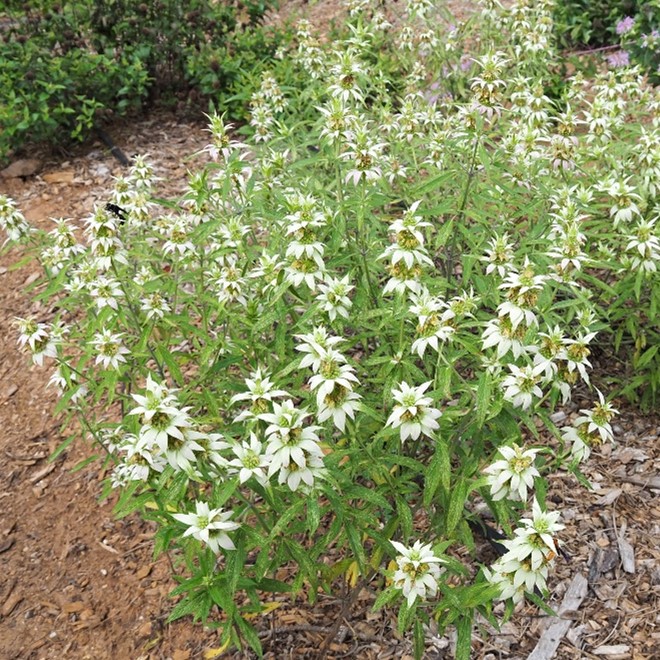
These ecotypes of Monarda punctata, also known as spotted beebalm, are native to the southeastern United States. They are unique in their growth habit, spreading via stolons (runners) rather than rhizomes. They bloom later in the season, from late summer to early fall, and provide a unique texture to garden plantings. Because of their short life cycle, they were not included in the disease evaluation, but they did exhibit signs of powdery mildew infection in the second year.
The Impact of Environmental Conditions on Beebalm
The study also highlighted the role of environmental conditions in the performance of Monarda. Factors such as soil type, watering practices, and sunlight exposure all played a role in plant success. For example, Monarda thrives in well-drained soil and full sun but can tolerate partial shade. Proper spacing is also crucial to reduce the risk of disease, as good air circulation around the plants can help prevent the spread of powdery mildew.
Outstanding Beebalm Performers
The study revealed several standout cultivars that excelled in multiple categories:
- Monarda ‘Jacob Cline’:This cultivar was a top performer in terms of flowering, producing an abundance of large, vibrant red flowers. It also demonstrated excellent disease resistance, making it a reliable choice for gardeners.
- Monarda ‘Petite Delight’:Known for its compact growth habit, this cultivar is ideal for smaller gardens or container planting. Despite its size, it did not compromise on bloom quantity or quality.
- Monarda ‘Raspberry Wine’:This cultivar stood out for its unique color, with deep raspberry-red flowers that added a striking contrast to garden landscapes. It also showed good tolerance to powdery mildew.
Practical Beebalm Tips for Gardeners
- Choose disease-tolerant plants: Select straight species such as Monarda bradburiana and cultivars known for their tolerance to powdery mildew, such as ‘Jacob Cline’ or ‘Raspberry Wine’.
- Plant in full sun: Beebalm thrives in full sun but can tolerate partial shade. Ensure your plants get at least 6 hr of sunlight daily.
- Provide good air circulation: Space plants properly for good air circulation, which can help prevent disease. For perennial species, divide crowns in early spring before the shoots bolt.
- Water wisely: Water beebalm at the base of the plant to keep the foliage dry and reduce the risk of mildew. Avoid overhead watering if possible.
- Tidy up the garden space: Removing spent flowers can encourage additional blooming and keep your plants looking tidy. In native perennial gardens, placing Monarda behind shorter plants hides unsightly foliage and accentuates the tall blooms. Large, mature seed heads act as a landing pad and snack for birds.
Conclusion
The study conducted by the University of Georgia highlights the versatility and value of Monarda in Georgia landscapes. Whether you’re looking to add a splash of color to your garden, support local wildlife, or simply enjoy the beauty of these native plants, Monarda offers something for everyone. With careful selection and proper care, you can enjoy a vibrant and healthy garden filled with the delightful blooms of beebalm.
Reference
Smith, R., Pennisi, S. V., Affolter, J., & Alley, H. (2024). Evaluation of select Monarda taxa in montane and piedmont regions of Georgia I: Horticultural performance and disease tolerance. HortScience, 59(6), 759–766. https://doi.org/10.21273/HORTSCI17793-24
